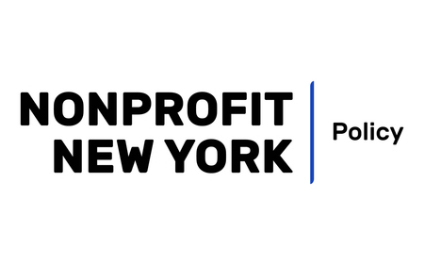Our communities are in crisis [1], and we as institutions are in crisis [2]. Without intervention, countless New Yorkers may be homeless and crucial organizations deeply embedded in communities for decades may close [3]. Nonprofits support both residential and commercial rent relief efforts. Nonprofits in New York State account for 18% of the private workforce, and contribute $800 billion in wages [4]. We have experienced sudden and severe financial losses and layoffs due to COVID-19 [5]. Our workforce is a majority women and people of color.
As the state considers additional rent and occupancy relief bills during the COVID-19 crisis and other public emergencies, we as nonprofits recommend rent and occupancy relief include:
● Meaningful rent forgiveness, particularly for organizations shut down with reduced
operating revenue or insurance coverage and individuals with no income (especially
immigrant families who have been excluded from federal relief efforts thus far)
● Rent relief for all apartment types including: basement apartments and accessory dwelling units common in New York City
For organizations and landlords
● Reimbursement for loss of rental income for nonprofit building owners (e.g. affordable and supportive housing providers, settlement houses and cultural institutions who rent space to other organizations)
● Resources for administration, clear guidance, and dedicated staff at State agencies
For communities
● Resources for communities without access to information, translation, and technology, such as designated navigators to assist with applying for relief
● Streamlined verification; for determinations of hardship, tenants should request a waiver with minimal burden of proof that landlords then use to apply for state relief
● Relief for workers in cash-based economies, gig workers, and undocumented workers
Housing relief considerations for nonprofits
Nonprofits can be tenants, landlords, or both. Supportive housing nonprofits and community development corporations with tenants rely on rental income to maintain operations. These organizations have lost 20% of revenue from rental income. Investing in supportive housing saves our state money, and prevents affordable property from being purchased by developers [6]. Other nonprofits have faced millions of dollars in lost revenue, almost all have been denied business interruption insurance coverage due to COVID-19 [7], and find themselves unable to afford rent. Many arts organizations risk losing their space because they were the first to shut down, will be the last to reopen, and too many landlords are not offering flexibility for payment plans [8].
We support A10387(Epstein)/ S08473(Hoylman), and recommend nonprofits be exempt from the 100 staff threshold [9]; all nonprofits should be eligible for eviction protections within this bill.
Signatories as of December 28, 2020
ADAPT Capital Region
At Risk for Young Ladies
Ballet Hispanico
BallroomBarks.org
Blessed Assurance Church of God
Bright Leaders Foundation, Inc.
Bronx Impact
Brooklyn Community Services
Center for Performance Research
Chinese-American Planning Council
Creators Voice Society, Inc.
Dance Entropy, Inc.
Dance Project of Washington Heights
DanceTactics Performance Group
Divine Intervention Institute
Foundation for the Global Compact
Girl Vow
Global Crisis Interventions
Goddard Riverside Senior Center
Green:Inspired:Art
Groundwork Hudson Valley
HB Studio, Inc.
Heidi Latsky Dance
iEARN-USA
Incline Pension Consulting
Independent Living Center of the Hudson Valley, Inc.
Interexchange, Inc.
Jazz Foundation of America
Kinding Sindaw Heritage Foundation
Kiwi
Literacy Assistance Center
Manhattan Graphics Center
Museum of Contemporary African Diasporan Art
NAMI Queens/Nassau
New Destiny Housing, Corp.
New York Council Navy League of the United States, Inc.
North Star Fund
Padma NYC Holistic Center
ParentChild+
Piatigorsky Foundation
Pioneers Go East Collective, Inc.
Restaurant Opportunities Centers United
Seven Loaves DBA GOH Productions
Stop the violence
Teens for Food Justice
The Fortune Society, Inc.
The Laundromat Project
The Warpaint Project, Inc.
Theatre of the Oppressed NYC
This Body
Urban Pathways
Youth Represent
Have questions? Contact our Policy Director, Chai Jindasurat at [email protected].
[1] Unemployment is at historic levels. New York State Department of Labor. (June 2020). Unemployment Rates by County. May 2020. Brooklyn Arts Council surveyed Brooklyn artists and found that 72% named rent as the biggest area for which they need relief. Dance/NYC reports that 74% of individual dancers need immediate funds for housing.
[2] Five Thirty Eight (May 2020). The industries hit hardest by the unemployment crisis.
[3] A recent report from Hester Street found that a majority of surveyed CBOs face a rent increase of 3-5% each year. Three in five have moved in the past 10 years, with half moving once and the remainder moving between 2 and 5 times. Reasons for moving primarily included a need for more/larger space (61%) or better quality space (57%), with some moving due to an expired lease with no renewal (26%), landlord
harassment (21%) or an unaffordable rent increase (17%). Among this survey group, only 15% felt confident in the longevity of their organization’s office and program space, or the physical capacity to meet the anticipated needs of programs, staff, members or participants in the next 10 years. See: Hester Street. (July 2020). Essential and At-Risk: The Power of Community Based Organizations and the Danger of Displacement.
[4] Office of the New York State Comptroller. (2019). New York Leads Nation in Nonprofit Jobs & Wages.
[5] According to a pulse poll Nonprofit New York sent out from March through mid-April, 85% of respondents canceled programs or events, 70% had reduced revenue, and 64% had a disruption of services to clients and communities. Nonprofit New York sent another poll to gauge continued impact, and out of 66 respondents, collectively over $30 million has been lost in revenue and over 900 staff laid off.
[6] Investing in supportive housing saves the city and state money by preventing carceral, legal, medical, and foster care public expenses. Overall, with NY/NY III service and operating costs taken into consideration, costs for NY/NY III tenants were $10,100 less than those for unplaced individuals for all services, benefits, and jail.” “NY/NY III tenants in combined populations were less likely to have medical services reimbursed by Medicaid for several types of avoidable health care events compared with unplaced eligible applicants, including inpatient hospitalization and emergency department visits related to injury, psychiatric treatment, and substance use….There were overall Medicaid savings for single adults with an SUD ($8,710), and young adults aging out of foster care ($4,628).” One well-designed study targeted a particularly high-needs group and found that savings in the health care system could be substantial. The study recruited homeless, hospitalized people with chronic illnesses that have a high risk of mortality. On average, people offered supportive housing spent 23 percent fewer days in hospitals, had 33 percent fewer emergency room visits, and spent 42 percent fewer days in nursing homes, per year during the study period, among other positive results.
[7] Many nonprofits were not eligible for sophisticated business interruption insurance plans that cover bacteria and viral infections, because they were too small or didn’t have a well-resourced legal team to negotiate a better plan.
[8] Many cultural institutions, including smaller geography-specific, or culturally specific orgs are losing their spaces because landlords have offered no flexibility. Often the tipping point fueling closures of nonprofit arts entities is their inability to make rent. This has a compounding effect. For spaces like studios and performance venues, particularly those that provide affordable space to artists, it has a devastating impact on the pipeline of who gets to make cultural work. If independent artists, the majority of artists, cannot afford space to develop work, all cultural life is impacted, particularly for people of color, immigrants, and other communities with less access to savings and or cash reserves. This will create conditions for inequality to rise within the arts community. The dance field in particular has lost several studios due to an inability to pay rent. Without true forgiveness, and no revenue for the foreseeable future, these institutions will be forced to close. 11% of arts organizations do not think they will survive. See: SMU DataArts. (May 2020). COVID-19 Impact on Nonprofit Arts and Culture in New York City.
[9] Many nonprofit organizations have well over 100 employees. Large arts and cultural organizations, and large human service organizations have hundreds, sometimes thousands, of staff members. Human service organizations have merged and consolidated in recent years due to chronic under-funding by the government, and operate with very thin margins.

